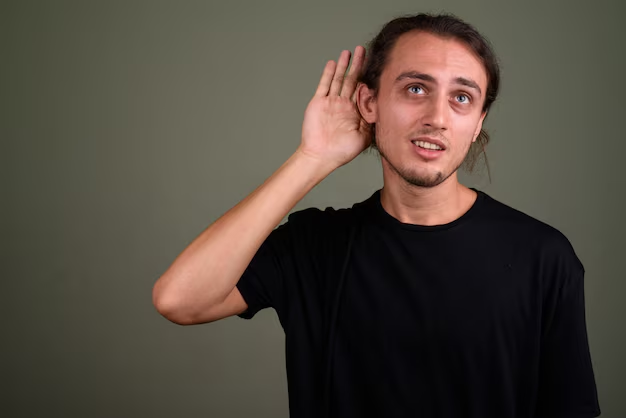How to Identify Which Ear Might Be Causing Vertigo: What You Need to Know
Imagine this: you stand up suddenly or turn your head quickly, and the world seems to spin wildly around you. Vertigo, a sensation of dizziness or spinning, affects millions worldwide and can be a disorienting, often alarming, experience. While several underlying conditions can trigger vertigo, identifying the specific ear responsible for your symptoms can be crucial to finding effective management strategies. So how do you determine which ear might be the culprit? Let's dive into this intriguing topic with a focus on practical understanding and exploration.
Understanding Vertigo: A Brief Overview
Vertigo is not a disease but a symptom of various balance disorders. The inner ear, also known as the vestibular system, plays a pivotal role in maintaining balance and spatial orientation. When something goes awry in this system, vertigo might occur. Common conditions leading to vertigo include:
- Benign Paroxysmal Positional Vertigo (BPPV): Often caused by tiny calcium particles (canaliths) that become dislodged and move into the inner ear canals.
- Meniere’s Disease: Characterized by fluid buildup in the inner ear, resulting in episodes of vertigo, hearing loss, and tinnitus.
- Vestibular Neuronitis: Inflammation of the vestibular nerve, often caused by viral infection.
- Labyrinthitis: An inflammation of the inner ear labyrinth, usually due to infection.
The Role of the Inner Ear: Why It Matters
The inner ear's labyrinth, comprising three semicircular canals and otolith organs, helps detect head movements and gravity. Each ear sends signals to the brain, helping maintain balance and equilibrium. When these signals are disrupted—say, due to BPPV or another condition—it can lead to vertigo.
Why identify the ear involved? Knowing which ear is causing problems can lead to more targeted and effective treatment options. For instance, specific repositioning maneuvers for BPPV depend on the location of the loose particles, typically clustered in one ear.
Tell-Tale Tests: How to Determine the Affected Ear
Several simple tests can indicate which ear is responsible for vertigo symptoms. These do not replace professional evaluation but can offer preliminary insights:
H2: The Dix-Hallpike Maneuver
The Dix-Hallpike test is commonly used to diagnose BPPV, especially in the posterior canal, which is a frequent site for dislocated canaliths. Here’s how it works:
- Sit on a bed with your legs extended.
- Turn your head 45 degrees to one side.
- Lie back quickly with your head hanging slightly off the edge of the bed.
If this movement induces vertigo, the affected ear is likely the side your head is turned toward. Repeat this on both sides to compare responses.
H3: The Roll Test
This test focuses on horizontal canal BPPV and involves:
- Lying supine and turning your head rapidly from side to side.
- Observing for nystagmus (involuntary eye movements) and vertigo onset.
The ear that prompts nystagmus upon head turning may signal the affected side.
H2: The Epley Maneuver
Once you have identified the problematic ear, maneuvers such as the Epley can help in dislodging particles back to their original position:
- Sit upright and then lie back, turning your head 45 degrees towards the affected ear.
- Hold for 30 seconds, then proceed to turn your head 90 degrees to the opposite side.
This repositioning technique proves effective in many cases of BPPV affecting specific canals.
Symptomatic Differences: Listening to Your Body
Not all vertigo originates from the same conditions or presents identically. Paying attention to symptoms can offer clues:
- BPPV: Symptoms are often triggered by particular head positions. Episodes are brief yet intense.
- Meniere's Disease: Typically manifests with recurring vertigo episodes, along with hearing loss and tinnitus.
- Vestibular Neuronitis or Labyrinthitis: Usually occurs suddenly, following an infection.
Observing the nuances of your vertigo can assist your healthcare provider in pinpointing the likely cause and ear involvement.
When to Seek Professional Help
While these at-home tests are insightful, they do not replace a comprehensive medical evaluation. Persistent vertigo or symptoms accompanied by severe headaches, vision changes, or hearing loss necessitate prompt medical consultation.
- Audiometry and vestibular tests can offer detailed analysis.
- Imaging, like MRI or CT scans, might be warranted in certain cases to rule out neurological causes.
Leading a Balanced Life: Managing Vertigo
Understanding which ear is causing vertigo can dramatically shape your management strategy. Here are some general tips for dealing with vertigo:
- Stay Hydrated: Dehydration can exacerbate symptoms.
- Avoid Sudden Movements: Stand up slowly and avoid quick head turns.
- Maintain Good Sleep Hygiene: Poor sleep can worsen episodes.
Practicing Mindfulness and Relaxation
Vertigo can be distressing, impacting mental well-being. Practicing mindfulness and relaxation techniques can ease anxiety surrounding vertigo episodes.
Closing Insights: Empower Your Vestibular Health
Identifying which ear might be causing your vertigo is a step toward understanding and managing this challenging condition. Remember, vertigo's underlying causes vary widely, and professional guidance remains invaluable. By familiarizing yourself with symptoms and tests, you can engage in more informed discussions with healthcare professionals and embrace strategies that help restore balance to your life.
📝 Summary of Practical Tips
- Identify the Problem: Use the Dix-Hallpike maneuver to test which ear may be involved.
- Conduct Simple Tests: Consider the roll test for additional insights.
- Recognize Symptoms: Be aware of symptoms like nystagmus and spinning to guide understanding.
- Practice Caution: Seek professional advice for persistent or severe symptoms.
- Adopt Lifestyle Adjustments: Stay hydrated, avoid sudden movements, and anchor your balance with simple exercises.
- 🤗 Stay Positive: Engage in relaxation techniques to support mental well-being through the journey.
Taking charge of your vestibular health empowers a balanced, invigorated life. 🌟
